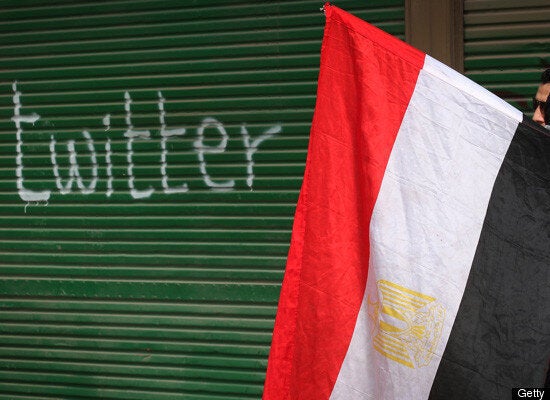
The following themes emerged from a brainstorming session on governance and social media held by the Nicolas Berggruen Institute in Palo Alto on March 4, 2012. Participants included, among others, Jared Cohen of Google Ideas, Microsoft strategist Charles Songhust, Transparent Society author David Brin, Singapore's foreign minister George Yeo, MIT Media Lab director Joichi Ito; eBay founder Pierre Omidyar, political scientist Francis Fukuyama and Alec Ross, the US State Department's top digital diplomat.
1. THE DESTRUCTIVE PHASE: DISRUPTIVE TECHNOLOGIES AND 'CRISES OF PROGRESS'Disruptive technologies that "augment vision, memory and attention" -- from the printing press to the world wide web -- always produce 'crises of progress' because they undermine the "protective guilds," intermediaries and institutions that once controlled information and power.
The vested interests of those institutions resist the loss of control while the insurgents persist. The first phase of change is therefore usually conflictive and destructive -- witness the religious wars in Europe after the Guttenberg press. The forces in this phase are centrifugal -- pulling apart and fragmenting.
In our age, the advent of social networks and the transparency of shared networks challenge all hierarchies from monopoly of the mainstream media to professional knowledge protected by credentials, such as doctors, to dictators protected by force.
This unmediated spread of information has given birth both to "the age of the amateur" and the passionate populists of the blog mobs. But the breakdown of intermediaries and the control of information by the credentialed has also given birth to the "unknown expert" whose "10,000 hours" of work and practice is all the qualification required. This breakdown is what has also enabled the leaps of innovation coming from "the dorm rooms and edges" of society.
Systems that adapt to the new transparency, or harness it, can survive. Those that resist will ultimately lose trust, and thus allegiance, and fail.
The rigid, such as the autocrats in Egypt and Tunisia, are brittle and break. The more flexible, such as the medical profession, which have turned patient information websites to their advantage, thrive.
Somewhere in between, autocratic China is headed in two directions at once: a "hyper-surveillance state" that seeks "total information awareness" of the activities of its subjects, yet a state itself subject to the "sous-veillance" of the microblogging population in a kind of "monitory webocracy."
In this sense, China is a "gigantic petri dish" of what comes next. The balance could go either way. To some the monitory webocracy of microblogs helps solve the age old problem of "insufficient feedback to the emperor," which has led to the fall of many an out of touch dynasty.
The hierarchical meritocracy of China is an efficient system, but fails ultimately without feedback loops that provide reliable information, clogging the meridians of the body politic. Social media can become an organic part of the Chinese body politic and thus improve good governance.
Others, like the dissident artist Ai Wei Wei, see a state that always wants to know where you are, what you do and who you talk to in order to be able to "crush" you at will.
2. THE CREATIVE PHASE: BUILDING NEW INSTITUTIONSa. If social networks can erode trust with tweets, undermine authority and tear down institutions, what might be their role in reconstruction?
After the centrifugal phase of pulling down and pulling apart, the next turn is a centripetal phase which pulls together and builds up new institutions based either on new authorities or conceptions of authority.
Historically, either new elites are installed and hierarchical institutions re-established with a different set of strong rulers and experts (the pyramid), or, in modern (post-Enlightenment) times a diamond shaped structure can form where most people are neither rich nor poor and conflict and competition, ritualized by rules, take place in "arenas" such as courts, markets, science and democracy.
Unlike the top to bottom power structure of the hierarchical pyramid, where legitimacy is invested in the rule of the worthy and the expert, the diamond model's legitimacy arises from a "reciprocal accountability" of its participants.
Today's social network upheaval puts pressure on both models to accommodate more participants who all share the same information.
The pyramid and the diamond are not so much alternatives as symbiotically linked like yin and yang, especially given the participatory power of social media.
Humans respond to challenge in two ways: ontogenetically and phylogenetically. Ontogenetic activities are organized and carried out through centrally designed institutions to shape the development of society. The phylogenetic response is evolutionary, like self-organizing bacteria lacking foresight but responding to the environment.
This relationship is both adversarial and symbiotic. Political authority today is ontogenetic and cyberspace is phylogenetic. The health of human society depends on the balance.
Might this lead to a new "hybrid" model of governance because more players and thus more complexity requires both more hierarchy to manage and, at the same time, more feedback loops of reciprocal accountability?
There is not one answer. A given balance within the operating system of governance will work or not work depending on the conditions. Success will only result from the "field effect" of bringing all the right elements to bear as the circumstances on the ground demand. One-person-one-vote, just like meritocratic rule, must be scaled to the circumstances.
The same happens within companies as well. Google required one kind of governance, more reciprocal and collegial, when it was only 500 innovating employees. With 50,000 employees and globe-spanning markets, complexity requires more hierarchy for efficiency's sake. Yet innovation must retain its own space or efficiency will kill it off.
In short, governance is an open-ended operating system based on what works. The most adaptable will survive.
b. Since social networks and shared knowledge continuously challenge elites and credentialed meritocracy, it is likely in the future that a new "agile meritocracy" whose transient power rises and falls based on reputation and performance -- will replace entrenched elites.
c. It takes an institution. Crowd-sourced authority is good for some things, not others. It is good for innovation and protest; it is bad for governance.
It is a libertarian illusion to believe that distributed networks of amateurs or "unknown experts' can self-administer a society based on rational self-interested decisions. Retail sanity does not necessarily, or even usually, add up to wholesale rationality. As often or not, retail sanity can add up to wholesale madness.
It was the distributed networks of financial experts that instigated the Wall Street meltdown. It was up to the stodgy old "drunk uncle" institution of the US government to salvage the system.
3. DEMOCRACY, DELIBERATION AND 'SMART MOBS'a. The crisis of governance today in democracies results from the "lack of deliberation." Deliberation is necessary so that democracy produces collectively-intelligent decisions instead of dumb politics.
Without deliberative mechanisms for making decisions that weigh consequences and balance trade offs, social networks that only enhance unmediated participation and information also just enhance the "dumb mob."
Turning the "dumb mob' into the 'smart mob' is one of the key challenges for the immense participatory power of social media.
As it is now, social media like Twitter or Facebook are good for simple minded mobilization of those prepared to act, but not for the processes of negotiation and consensus building required for intelligent decision making.
To bring deliberative polling to cyberspace might be one way to help forge the smart mob out of the dumb mob.
As deliberative polling experience -- from California to China to Japan to Europe -- has shown, the public is not as polarized as political elites. This is especially true in the US where politicians are often driven to extremes by the primary process.
Consensus can emerge, however, when citizens -- selected as indicative representatives of the electorate at large through scientific sampling -- are put in a depoliticized zone, or an "island of goodwill" beyond the reach of the "persuasion industry" that dominates elections, and given the facts and access to experts with contending points of view.
While deliberative polling has been done physically -- by bringing 200 or 500 people together through scientific sampling (not unlike in Athens 2400 years ago where the assembly of 500 was chosen by lottery) -- it has not been done virtually.
The success of on-line seminars by universities such as Stanford -- where as many as 160,000 people participate virtually -- suggests the possibilities.
b. Neither transparency nor opacity are in and of themselves stand alone virtues.
Too much transparency can destroy the robustness of deliberative institutions. This is the "paradox of openness."
If deliberative polling requires a certain 'depoliticized space,' deliberative institutions require a certain opacity to shield their decisions from popular pressure and "tyranny of the majority.' This is why the Supreme Court and the Federal Reserve are not "transparent' institutions. Opacity allows the breathing space for reasoned deliberation not subject to popular opinion.
However, to ensure that deliberative institutions don't become hidebound, they must be linked to robust feedback loops and replenished or 'aerated' periodically by rotations of personnel.
4. NEUTRAL MEDIA VS. MONETIZING ATTENTIONNeutral, objective, quality information is the basis for solid deliberation.
Yet, here, we face the same politicization and polarization as in political life. Just as primaries drive politics in democratic societies to polarized positions, the imperative of "monetizing attention' for niche markets contaminates the objective quality of information, which is edited to sell. Bloggers talk only to their own tribe. People find only the information they are looking for. Information becomes non-communication.
What social scientists predicted has come to pass: greater bandwith has meant more compartmentalized information.
Curating information -- sorting out intellectual quality and truth claims or communicating across boundaries -- is akin to governance through deliberation.
Perhaps "the value of curation" may one day be priced accordingly by the market. But today, objective, neutral, quality information must be provided as a "public good" and thus subject to the problem of "free riders."
5. BELOW THE NATION STATEMuch of the discussion has been focused on the relationship of social media to the nation-state. Yet, we've known, and it's been said, for a long time that the nation state is too small for global problems and too big for local problems.
In a networked world of distributed power it would make more sense to seek change from the bottom up, from the city to the subnational level, than from the nation state or the level of global summitry.
This is especially so as the world has become mostly urbanized with an archipelago of megacity regions with 20-million-plus inhabitants each, especially in Asia. Megacities are the network nodes where people live and work (or are unemployed), where they play and pollute.
Already dense with feedback because of physical proximity, the intensified feedback loops of social networks can make cities even more intelligent.
